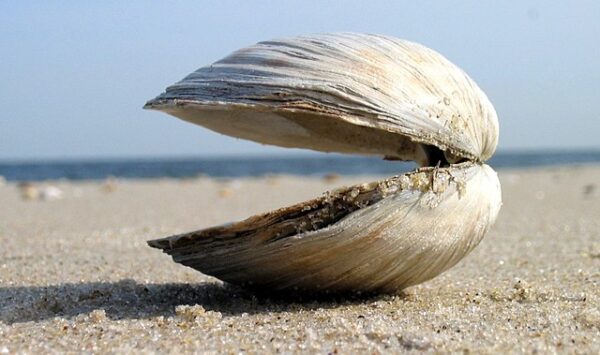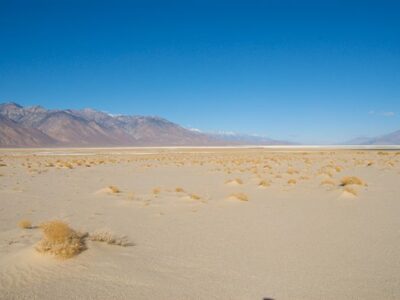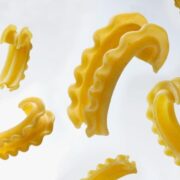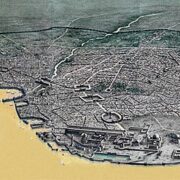
Blaine Parker was catching clams on the coast of Florida, looking to make some clam chowder, when he saw something incredible: the biggest clam he’s ever seen. Not only was his catch huge, but it was also extremely old, dating back centuries to 1809.
The Washington Post writes, “Parker, an AmeriCorps member at the Gulf Specimen Marine Lab in Panacea, Fla., near Tallahassee, spends his days studying shellfish. This one he encountered on February 18 left him speechless.
He was struck by its size, which indicated its age, he said. Generally, the larger the clam, the older it is. Most quahog clams found in U.S. waters are between 2.8 and 4.3 inches long, although they can grow larger.
‘I’ve seen that species of clam, but never one that big or even close to that big,’ said Parker, 23, explaining that the average quahog weighs about half a pound and that his discovery was 2.6 pounds and six inches long.”
Parker told the Tallahassee Democrat that the clam was big enough to make two servings and its shells could be used as bowls to serve it in.
“We were just going to eat it, but we thought about it a while and figured it was probably pretty special. So, we didn’t want to kill it,” he said.
Instead, he took it back to work, a science lab where he studies shellfish.
Gulf Specimen Marine Lab, a research lab and aquarium, said Blaine Parker was on Alligator Point, a Florida beach on the Gulf of Mexico, when he found the quahog clam, according to CBS.
Most of these clams are 2.8 to 4.3 inches, according to the lab, but Parker’s was six inches and 2.6 pounds.
Quahogs have concentric growth rings, according to NOAA. Similar to the rings inside the trees, the number rings on the clam’s shel tell its age.
Parker counted 214 rings on the clam – dating it back to 1809. That happens to be the year President Abraham Lincoln was born. So, the clam was given a very apropos name: Aber-clam Lincoln.
Aber-clam has been a huge crowd-pleaser, drawing over 100 visitors a day to the lab, but Blaine thought the big guy deserved to be free. After all, he was named after The Great Emancipator. On February 24, less than a week after he found the clam, the grad student released it back into the wild off the coast of The Gulf of Mexico.
“I determined that it was too special to let it die in captivity or be made into soup,” Parker told WaPo. “I felt a lot better turning it loose.”
[Read More: Miracle Baby Sets Record]









